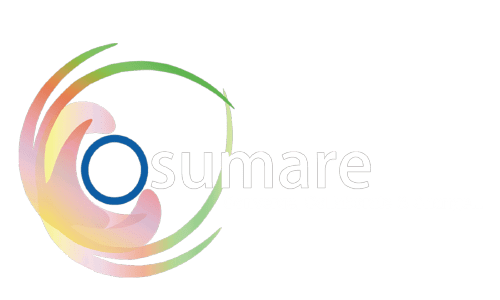SEO has evolved far beyond just stuffing exact-match keywords into content. Today, search engines use advanced algorithms to understand the context of content rather than just matching keywords. This is where LSI (Latent Semantic Indexing) keywords and Semantic SEO come into play.
By using LSI keywords and focusing on semantic relevance, websites can improve search rankings, enhance user experience, and drive organic traffic. In this guide, we’ll explore how to optimize for LSI keywords and Semantic SEO to stay ahead in modern search engine optimization.
Also Read: Common SEO Mistakes You Should Avoid & How to Fix Them
What Are LSI Keywords?
LSI (Latent Semantic Indexing) keywords are words and phrases related to a main keyword. They help search engines understand the topic of a webpage by identifying contextual relationships between words.
For example, if your main keyword is “Apple”, LSI keywords could be:
If referring to the fruit: juice, orchard, vitamin C, nutrition
If referring to the tech company: iPhone, MacBook, iOS, App Store
Why Are LSI Keywords Important?
Improve Content Relevance: Helps Google understand the topic better.
Enhance User Experience: Prevents keyword stuffing and makes content more readable.
Boost Rankings: Pages with semantically relevant keywords rank better.
Increase Organic Traffic: Attracts a broader audience searching for related terms.
What Is Semantic SEO?
Semantic SEO focuses on the meaning behind search queries rather than just matching keywords. Google’s algorithms, like RankBrain and BERT, analyze context, user intent, and relationships between words to deliver better search results.
How Semantic SEO Works
Understanding User Intent: Search engines prioritize results that answer user queries effectively.
Topic Clusters: Instead of writing isolated blog posts, sites should create clusters of related content linked to a main topic.
Entity-Based SEO: Google connects related entities (e.g., “Elon Musk” → “Tesla” → “Electric Cars”).
How to Optimize for LSI Keywords and Semantic SEO
1. Perform Keyword Research with Context in Mind
Traditional keyword research focuses on search volume and competition, but Semantic SEO requires finding contextually related terms.
Tools for Finding LSI Keywords
Google Autocomplete & Related Searches (at the bottom of Google SERPs)
LSIGraph (Generates related terms)
Google Keyword Planner (Shows related keywords)
Google Trends (Finds trending topics and phrases)
Ahrefs / SEMrush (Provides keyword clusters and related terms)
2. Use LSI Keywords Naturally in Content
Instead of forcing LSI keywords, use them where they naturally fit.
Best Places to Add LSI Keywords:
Title Tags & Meta Descriptions (To improve CTR)
Headings & Subheadings (To structure content better)
Body Content (Use variations to enhance readability)
Image Alt Text (Helps with image SEO)
Anchor Text for Internal Links (To boost page relevance)
3. Create Comprehensive, Topic-Based Content
Google prefers in-depth content that fully answers a user’s query. Instead of short posts, create long-form articles covering multiple aspects of a topic.
How to Structure Content for Semantic SEO:
Main Keyword Focus: The primary keyword should guide the topic.
Use Subtopics: Address all related questions and subtopics.
Answer Common User Queries: Use FAQs and People Also Ask (PAA) questions.
Internal Linking Strategy: Link related pages to create topic authority.
4. Optimize for Voice Search and Conversational Queries
With the rise of voice search, users now ask questions instead of typing keywords. Optimize for natural language queries to match this trend.
How to Optimize for Voice Search:
Use Question-Based Keywords (e.g., “How does Semantic SEO work?”)
Write in a Conversational Tone
Optimize for Featured Snippets (Google often pulls voice search answers from snippets)
Target Local SEO (Many voice searches are location-based)
5. Focus on Search Intent Over Exact-Match Keywords
Google classifies search intent into four types:
Informational: The user seeks knowledge (e.g., “What is Semantic SEO?”)
Navigational: The user wants a specific website (e.g., “Ahrefs SEO blog”)
Transactional: The user intends to buy (e.g., “Buy SEO course online”)
Commercial Investigation: The user compares options (e.g., “Best SEO tools 2024”)
Instead of obsessing over exact keywords, tailor content to match user intent.
6. Improve Content Readability and User Engagement
Search engines analyze user signals like time on page and bounce rate to rank content. To improve engagement:
Use Short Paragraphs & Bullet Points
Include Images, Infographics, and Videos
Use Clear and Concise Language
Encourage User Interaction (Comments, Shares, Polls)
Common Mistakes to Avoid in Semantic SEO
Even with the best strategies, some errors can hurt SEO efforts.
🚫 Keyword Stuffing: Overloading content with LSI keywords feels unnatural.
🚫 Ignoring User Intent: Writing content without understanding what users really want.
🚫 Not Using Internal Links: Poor linking structure weakens topic authority.
🚫 Skipping Mobile Optimization: Mobile-friendly content is a must for ranking.
The Future of SEO: AI, NLP, and Beyond
Google’s AI-driven updates will continue to refine Semantic SEO. Future trends include:
More Sophisticated Natural Language Processing (NLP)
Increased Importance of Entity-Based SEO
Greater Focus on E-E-A-T (Experience, Expertise, Authority, Trustworthiness)
Voice and Visual Search Expansion
Conclusion
LSI Keywords and Semantic SEO are essential for modern SEO success. Instead of focusing solely on exact-match keywords, optimize for related terms, search intent, and topic relevance. By structuring content properly and engaging users, websites can achieve higher rankings, better traffic, and improved conversions.
FAQs
1. How do I find LSI keywords for my content?
Use tools like Google Autocomplete, LSIGraph, Ahrefs, and SEMrush to discover related keywords.
2. Can I rank without using exact-match keywords?
Yes! Google prioritizes content relevance and search intent over exact keyword matching.
3. How does Semantic SEO impact voice search?
Semantic SEO helps optimize for natural language queries, improving voice search rankings.
4. What’s the difference between LSI and long-tail keywords?
LSI keywords are contextually related, while long-tail keywords are specific keyword phrases.
5. How often should I update my content for Semantic SEO?
Regularly updating content (every 6-12 months) keeps it relevant and ranking higher.

